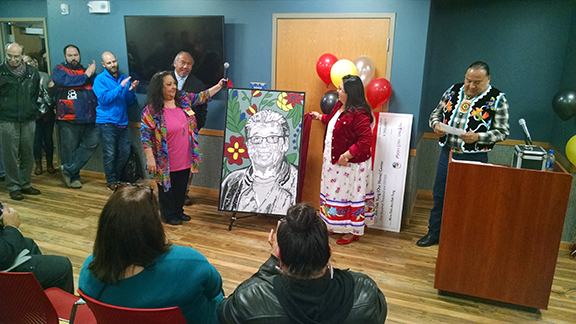
By Lee Egerstrom
Tribal leaders, government officials and social service providers from throughout the urban metro area met in St. Paul prior to Thanksgiving to open the newly-built Mino Oski Ain Dah Yung housing project to help combat homelessness among Native young people.
The 42-unit housing project, the newest venture for the Ain Dah Yung Center, is jointly owned with Project for Pride in Living (PPL), a Minneapolis-based service organization that helps low income individuals and families with affordable housing and career development.
Twelve young people between the ages of 18 and 24 had already moved in when service providers and supporters gathered for an official open house Nov. 20. Ain Dah Yung staff said processing was underway so at least 20 young people who were homeless or are in danger of being homeless would be in residence by Thanksgiving.
Last winter’s homeless encampments and continuing problems with homelessness throughout the Twin Cities were painful memories for those in attendance. Hugs and tears mixed with laughter as about 300 people who work with homelessness and affordable housing gathered for the event.
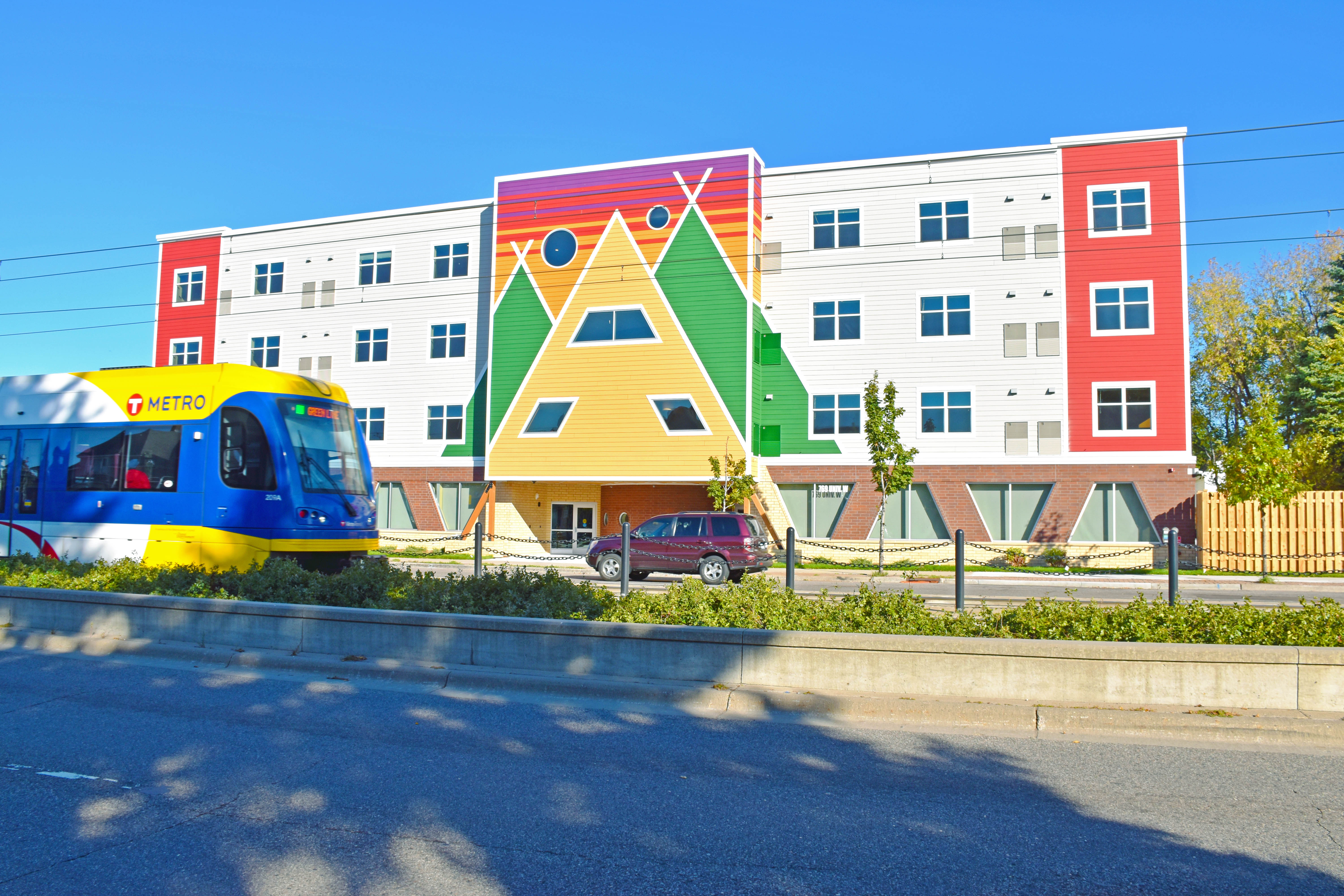
Deb Foster, executive director of the Ain Dah Yung, told of how the $17.5 million effort came together over the past two years, emotionally recalling and thanking all the government and nonprofit groups that “worked together as a community.”
Given the magnitude of the housing crisis, the Mino Oski Ain Dah Yung seems a small step in fighting homelessness. But it is a giant step in addressing problems facing Native young adults.
Lt. Gov. Peggy Flanagan, an enrolled member of the White Earth Nation, told how Native Americans make up only 2 percent of Minnesota’s population. But 22 percent of youthful homeless people in Minnesota are Natives.
“Our young people, they deserve this,” Flanagan said of the new housing complex. “Our young people dream to have a place to be loved, a place to call home.”
Partnering with Ain Dah Yung on this housing project were PPL, DSGW Architects, of Duluth and Lake Elmo; Loeffler Construction, a Native-owned construction company in Lakeville; and Fox Advancement, a Minneapolis nonprofit that assists nonprofit organizations with securing funds through grants planning, grants writing, board development, campaign management and finding donors.
PPL’s president and chief executive, Paul Williams, was among the visibly moved by the opening of the housing project. Located at 769 University Ave. W., in the St. Paul neighborhood known as Frogtown, the Mino Oski building is within two blocks from where he grew up, Williams said.
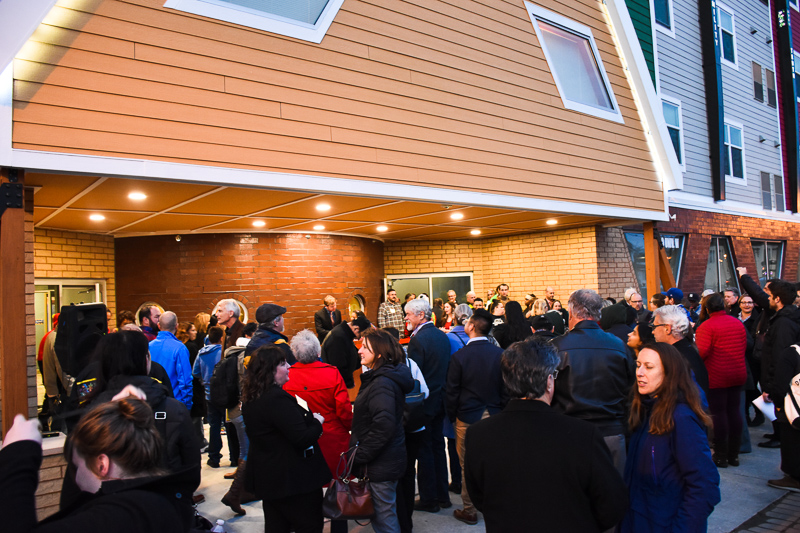
Williams is a former deputy mayor of St. Paul. PPL, meanwhile, is engaged in housing projects throughout the Twin Cities including the 77-unit Anishinabe Bii Gii Wiin complex at 1600 19th St. S. in Minneapolis.
The city of St. Paul, National Equity Fund, Metropolitan Council, Federal Home Loan Bank, Shakopee Mdewakanton Sioux Community, Minnesota Department of Employment and Economic Development (DEED), the Mille Lacs Band of Ojibwe, Ramsey County and Minnesota Housing Finance Agency were all instrumental in bringing the project forward, Foster and Williams stressed.
Shakopee Mdewakanton financial support was especially crucial because it made grants in timely fashion to leverage government housing program funds, Foster explained.
In all, SMSC provided $700,000 for the development. Allene Ross, the Sharing Resources Work Group leader for the tribal government, recalled SMSC made modest contributions to housing programs at the Division of Indian Work before SMSC developed its large hospitality and entertainment operations.
Support for the Mino Oski youth housing project is a continuation of that commitment, she said. There were appreciative gasps throughout the crowd when she explained, “We know what it’s like to be without, because we’ve been there.”
The Mille Lacs Band was also singled out for timely support. It made capital contributions when they were needed to leverage $750,000 in public funding. It also contributed funds for an artist to prepare a large portrait of Herbert James Sam, “Gidagaabinesh,” the Mille Lacs spiritual leader who died Sept. 14 a year ago. That was shortly after conducting a blessing at the groundbreaking for the housing site.
Foster explained that Sam named the site Mino Oski Ain Dah Yung, which means “Good New Home” in Ojibwe.
Mille Lacs tribal chair Melanie Benjamin joined Foster in unveiling the portrait that will be displayed in the housing complex.
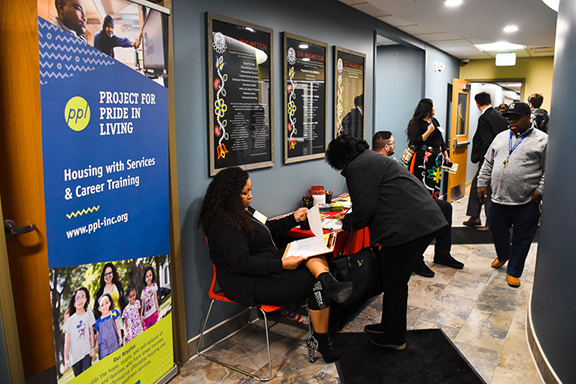
These were among presentations that made for an emotional night at a housing project, unlike most ribbon cutting ceremonies at grand openings.
Ramsey County Commissioner Toni Carter spoke passionately about the “sense of community” of the various people, government agencies and nonprofit groups gathered at the site. The commissioner, who is also the mother of St. Paul Mayor Melvin Carter, declared, “We are all walking this path together.”
Another emotional moment came when Mark Laverdure, a principal with DSGW Architects and director of its First American Design Studio, presented Foster with a large handmade blanket that contained Indian design elements also built into new building.
The blanket was made by Laverdure’s mother-in-law, he said. An enrolled member of the Turtle Mountain Band of Chippewa in North Dakota, he said he likes to give blankets at the completion of projects in Indian Country. It harkens back to earlier days when Natives would give gifts of hides, he said.
Other emotional moments came when Ain Dah Yung staffers gave guided tours of the new building and grounds.
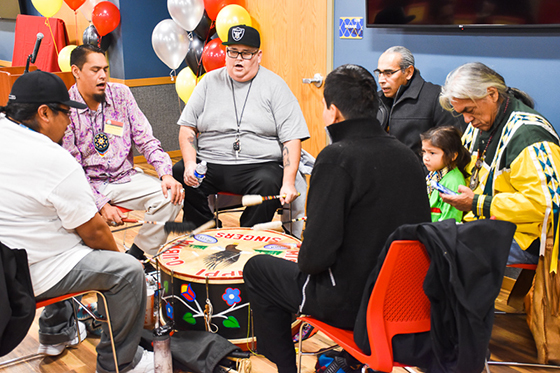
There is a medicine garden provided on the grounds, said Alex McDougall, a Mino Oski transition coach at the complex.
Architecture designs incorporate various symbols important in Native cultures, she noted, and common meeting rooms and galleries allow for various training programs, spiritual healing and healthy food preparation and planning.
The rooms themselves are spacious areas that are frequently called efficiency apartments in rental properties. Bathrooms are designed for use by people with various physical needs.
McDougall, of White Earth Ojibwe and Pine Ridge Lakota heritage, also explained what transition coaches do for the young people tenants. They help with various adjustments and training, she said, and noted that more than 30 groups have made contributions to provide bedding, kitchen utensils and dishes, and training tools such as computer systems to prepare the young adults for the workplace.
Information about Ain Dah Yung Center and its housing and emergency shelter programs can be found at www.adycenter.org.
Information about Project for Pride in Living is at www.ppl-inc.org.






